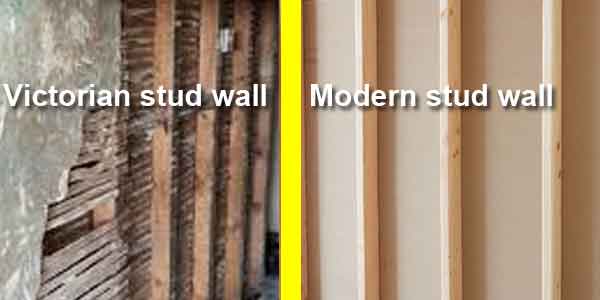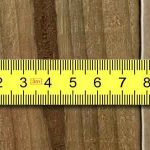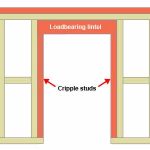Just like modern properties, Victorian houses will often have stud walls internally. Studwork was, and still is, a cheap and effective way of building non-load bearing, dividing walls in a property.
If we look at a standard Victorian mid terrace property. It would be most common for the load bearing walls, to be the dividing walls between each property. As well as the main front and back walls.

The majority of internal walls, that divide the space into individual rooms, would be stud walls. This is not set in stone and some properties may have internal masonry walls. However, building studs is far easier. Especially over multiple floors.
Obviously, the size and layout of a property would determine if more load bearing walls were needed. In bigger properties you may find structural walls in the middle of the building. These would be built all the way from the foundations up to the roof.
This would Provide support for floor joists on each floor, as well as the roof above.
Victorian stud walls vs modern stud walls
There are some differences with a modern stud wall and a wall that was built in the Victorian era. The first thing you will notice if you are removing this type of wall, is it will not have modern plasterboards and skimmed plaster.
Instead you are likely to find Lathe and plaster. This is a technique that was most popular at the time. It was a way to plaster not only stud walls, but also ceilings in old properties.
The way this worked, was thin pieces of timber were nailed to the studwork horizontally. This formed a surface that plaster was applied too.
Also, unlike modern properties, there was no gypsum plaster, instead plaster was lime based. Lime plaster is harder to work with than modern plaster. However, it does have some benefits. The main one being it is breathable.
At the time most mortar and plaster would have been lime based. This would let the property breathe and avoid any moisture and condensation building up inside.
Another main difference is the uniformity of studs. In modern properties, studs are spaced at equal distances (usually 400mm centres) this makes fitting plasterboards much easier. However, this might not be the case in all older properties. They didn’t need to fit boards, so 400 centres weren’t as important. This can mean slightly different spacing.
Working on Victorian stud walls
There are several reasons you may need to work on a stud wall in your Victorian property. These could include:
- Removing the wall entirely – Perhaps you want a more open plan area in the property, and you are removing the entire wall.
- Moving a wall – You may want to slightly change the layout. Or make one room bigger/smaller. I recently moved a bathroom wall to allow for a bigger bath, so this type of job is quite common.
- The wall needs re-plastering – The lime plaster in a Victorian house could be up to 150+ years old. In this time, it is very common that plaster will deteriorate and blow.
Unless you are just patching the original plaster, any job will usually involve removing the old lathe and plaster. This is a dirty job, so make sure you use dust sheets and wear a mask. Ideally take your time removing it. The dust can be quite bad, so proceed with caution.
Stud walls are generally not load bearing. So, if you are removing the wall, you can knock the studs out with a hammer. Simply hit hard at the base of the studs to pull the nails out.
Once all the uprights are removed, you will be left with the base plate and the top of the wall. These should easily lever off with a crowbar and a hammer.
In 95% of cases all the fixings will be nails, so you won’t need to unscrew anything.
On the other hand, if you are keeping the wall and re-plastering, you will need to remove all the small nails that were used to fix the lathe timbers.
Also, when fitting new boards, you should measure the stud spacing, as this can be slightly less uniform in older properties and sometimes you won’t get perfect 400mm centres.
Conclusion
Stud walls in Victorian houses are very common. Just like today, if a wall wasn’t load bearing, then studwork was usually the easiest and cheapest option.
In general, the timber studwork is very similar to a modern stud wall. However the plaster and finish of the wall is very different. If you are removing this plaster, be prepared for a lot of mess. You have been warned.




